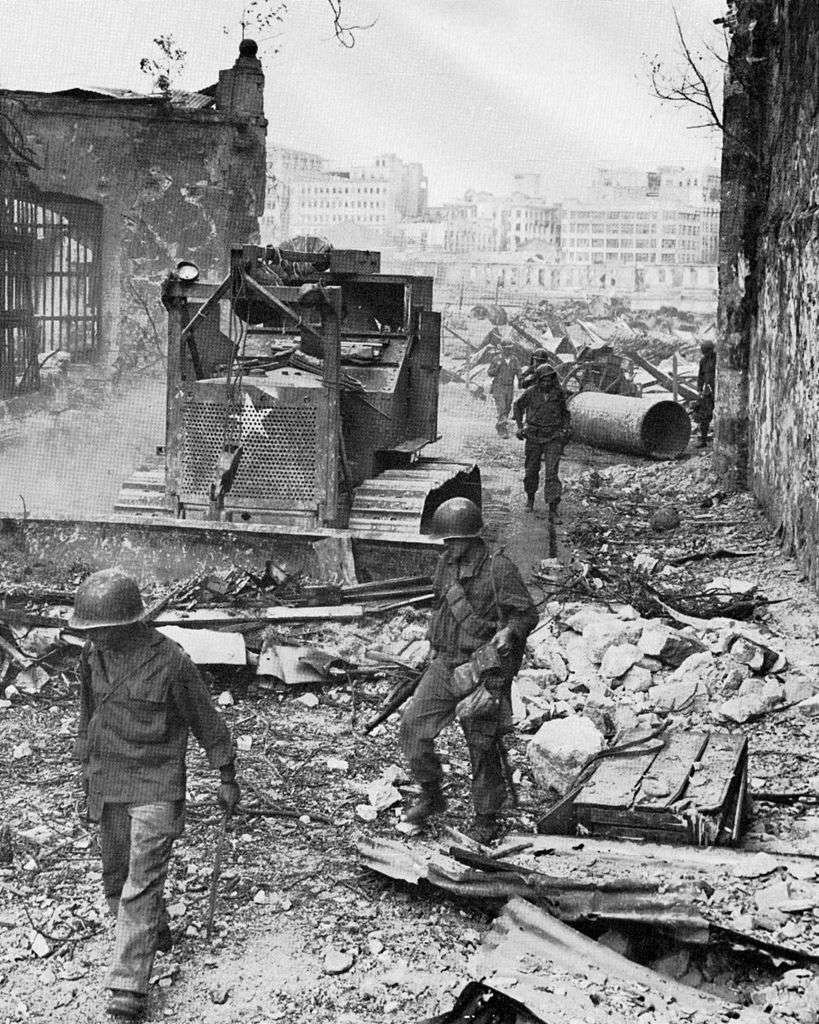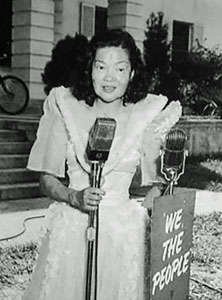
Heroes of WWII: Josefina Guerrero the Leper spy
From outcast to the perfect spy, discover the story of Josefina Guerrero the Leper Spy.
Born in The Philippines on August 5th, 1917, to religious parents, Josefina adored Joan of Arc and would dream of one day becoming a heroine. After losing both of her parents at a young age she was taken in by the Sisters of the Good Shepherd, a religious convent. After contracting tuberculosis, the nuns were unable to care for Josefina and she was taken in by her grandparents. Once she had recovered, she was sent to a convent in Manila. Guerrero enjoyed art, poetry and music, she was described by many as attractive, lively and jolly.
On April 21st 1934, at the age of 16 Josefina Guerrero married 26-year-old Renato Maria Guerrero. And two years later the couple welcomed a daughter. In 1941 Josefina was diagnosed with Hansen's disease, also known as leprosy. Immediately after her diagnosis Renato moved out of their home and took their daughter with him, leaving Josefina alone. Leprosy held such a stigma that people diagnosed with the condition were completely ostracised from their communities.
When the Japanese invaded The Philippines in 1942 it led to a shortage of medical supplies. With Josefina unable to get the vital medication she needed to control her disease she felt hopeless and depressed, she thought back to her childhood and remembered her admiration for Joan of Arc and knew if she was going to die then she would die a heroine.
Aged 24 Josefina Guerrero joined the resistance as a spy, working as a courier to deliver important news about the war. She memorised the appearances of the Imperial Japanese army men and reported their troop movements. As Josefina's disease worsened due to the lack of medication, she noticed that due to her now very visible lesions the Japanese guards at the checkpoints would let her through without a full body search as they had previously. Guerrero successfully transmitted secret messages, information, weapons, and vital supplies to the resistance and soldiers. Her tasks later escalated to mapping out Japanese gun emplacements and fortifications.
On September 21st 1944, the Americans successfully used her map to crush the Japanese defenses in Manila Harbour. In late January 1945, Josefina Guerrero was sent on her most dangerous mission. She was told before departing to go to confession as her handlers did not expect her to survive. Her mission was to bring the American troops, who were 35 miles away, a map of landmines planted by the Japanese around Manila. Josefina set off on foot with the map underneath her clothing taped between her shoulder blades. She walked 25 miles to Hagonoy and to avoid an active war zone she boarded a boat and had to outrun river pirates. She then walked a further 8 miles to the American base at Calumpit, and realised that the Americans had left 3 hours earlier on their way to Malolos. So, she set off to Malolos and managed to reach the American troops to hand the map to Captain Blair of the 37th Infantry Division. She suffered paralyzing fatigue and headaches throughout her journey but nevertheless carried on.
Josefina Guerrero joined the Americans on their way to manila, she assisted during the Battle of Manila by tending to wounded soldiers and civilians, and carried children to safety, all while avoiding flying bullets.
Born in The Philippines on August 5th, 1917, to religious parents, Josefina adored Joan of Arc and would dream of one day becoming a heroine. After losing both of her parents at a young age she was taken in by the Sisters of the Good Shepherd, a religious convent. After contracting tuberculosis, the nuns were unable to care for Josefina and she was taken in by her grandparents. Once she had recovered, she was sent to a convent in Manila. Guerrero enjoyed art, poetry and music, she was described by many as attractive, lively and jolly.
On April 21st 1934, at the age of 16 Josefina Guerrero married 26-year-old Renato Maria Guerrero. And two years later the couple welcomed a daughter. In 1941 Josefina was diagnosed with Hansen's disease, also known as leprosy. Immediately after her diagnosis Renato moved out of their home and took their daughter with him, leaving Josefina alone. Leprosy held such a stigma that people diagnosed with the condition were completely ostracised from their communities.
When the Japanese invaded The Philippines in 1942 it led to a shortage of medical supplies. With Josefina unable to get the vital medication she needed to control her disease she felt hopeless and depressed, she thought back to her childhood and remembered her admiration for Joan of Arc and knew if she was going to die then she would die a heroine.
Aged 24 Josefina Guerrero joined the resistance as a spy, working as a courier to deliver important news about the war. She memorised the appearances of the Imperial Japanese army men and reported their troop movements. As Josefina's disease worsened due to the lack of medication, she noticed that due to her now very visible lesions the Japanese guards at the checkpoints would let her through without a full body search as they had previously. Guerrero successfully transmitted secret messages, information, weapons, and vital supplies to the resistance and soldiers. Her tasks later escalated to mapping out Japanese gun emplacements and fortifications.
On September 21st 1944, the Americans successfully used her map to crush the Japanese defenses in Manila Harbour. In late January 1945, Josefina Guerrero was sent on her most dangerous mission. She was told before departing to go to confession as her handlers did not expect her to survive. Her mission was to bring the American troops, who were 35 miles away, a map of landmines planted by the Japanese around Manila. Josefina set off on foot with the map underneath her clothing taped between her shoulder blades. She walked 25 miles to Hagonoy and to avoid an active war zone she boarded a boat and had to outrun river pirates. She then walked a further 8 miles to the American base at Calumpit, and realised that the Americans had left 3 hours earlier on their way to Malolos. So, she set off to Malolos and managed to reach the American troops to hand the map to Captain Blair of the 37th Infantry Division. She suffered paralyzing fatigue and headaches throughout her journey but nevertheless carried on.
Josefina Guerrero joined the Americans on their way to manila, she assisted during the Battle of Manila by tending to wounded soldiers and civilians, and carried children to safety, all while avoiding flying bullets.

After the war, Josefina Guerrero was sent to Tala Leprosarium in Novaliches. The institution's conditions were appalling with no running water or electricity, it was overcrowded and only had four nurses for over 650 patients. Food, clothing and bedding were scarce. Josefina set to work cleaning the institute as much as possible, helping teach the young patients and helped build coffins for those that succumbed to the disease.
At the point of desperation, Josefina wrote to a friend in the US about her situation. Her letter found its way to the Catholic Chaplain at the National Leprosarium of the United States in Carville, Louisiana, where it reached the Manila Times who wrote an exposé about the Leprosarium's conditions. This finally prompted the Philippine government to take action. New dormitories were built, and the leprosarium received beds for both the dormitories and hospitals, so that all patients had somewhere to sleep. Food rations were improved, telephone service was installed for emergencies, and water stations were built. The campus was cleaned up and medical staff added.
After hearing about the work at the Catholic Chaplain at the National Leprosarium, Josefina knew that this would be the best place for her to overcome her disease. Josefina worked to obtain the first American visa for a foreign national with Hansen’s disease (leprosy), and in 1946 she arrived at the institute in Carville. Upon arrival Josefina was diagnosed with an advanced case of the disease and was given a 9-year treatment plan. In April 1957 she was discharged from Carville, with her disease in remission.
Although her disease was now dormant, Josefina Guerrero struggled to find employment when employers found that she had been a patient at the Carville Leprosarium. At the same time, she was also fighting the decision to deport her back to The Philippines. With the help of US military personnel, members of the press and attorneys Josefina Guerrero was allowed to stay in the US.
After her traumatic past, Josefina wanted to live the rest of her life out of the public eye. She remarried and changed her name in hope to forget her past. She reunited with her daughter once, when her daughter visited the US, but Josefina never returned to The Philippines. Josefina Guerrero died on June 18th 1996, and was buried in Mount Olivet Cemetry in Washington.
At the point of desperation, Josefina wrote to a friend in the US about her situation. Her letter found its way to the Catholic Chaplain at the National Leprosarium of the United States in Carville, Louisiana, where it reached the Manila Times who wrote an exposé about the Leprosarium's conditions. This finally prompted the Philippine government to take action. New dormitories were built, and the leprosarium received beds for both the dormitories and hospitals, so that all patients had somewhere to sleep. Food rations were improved, telephone service was installed for emergencies, and water stations were built. The campus was cleaned up and medical staff added.
After hearing about the work at the Catholic Chaplain at the National Leprosarium, Josefina knew that this would be the best place for her to overcome her disease. Josefina worked to obtain the first American visa for a foreign national with Hansen’s disease (leprosy), and in 1946 she arrived at the institute in Carville. Upon arrival Josefina was diagnosed with an advanced case of the disease and was given a 9-year treatment plan. In April 1957 she was discharged from Carville, with her disease in remission.
Although her disease was now dormant, Josefina Guerrero struggled to find employment when employers found that she had been a patient at the Carville Leprosarium. At the same time, she was also fighting the decision to deport her back to The Philippines. With the help of US military personnel, members of the press and attorneys Josefina Guerrero was allowed to stay in the US.
After her traumatic past, Josefina wanted to live the rest of her life out of the public eye. She remarried and changed her name in hope to forget her past. She reunited with her daughter once, when her daughter visited the US, but Josefina never returned to The Philippines. Josefina Guerrero died on June 18th 1996, and was buried in Mount Olivet Cemetry in Washington.

 Skip to content
Skip to content


Caspar
Very interesting, knew nothing of these sorts of actions in far east during WW2.